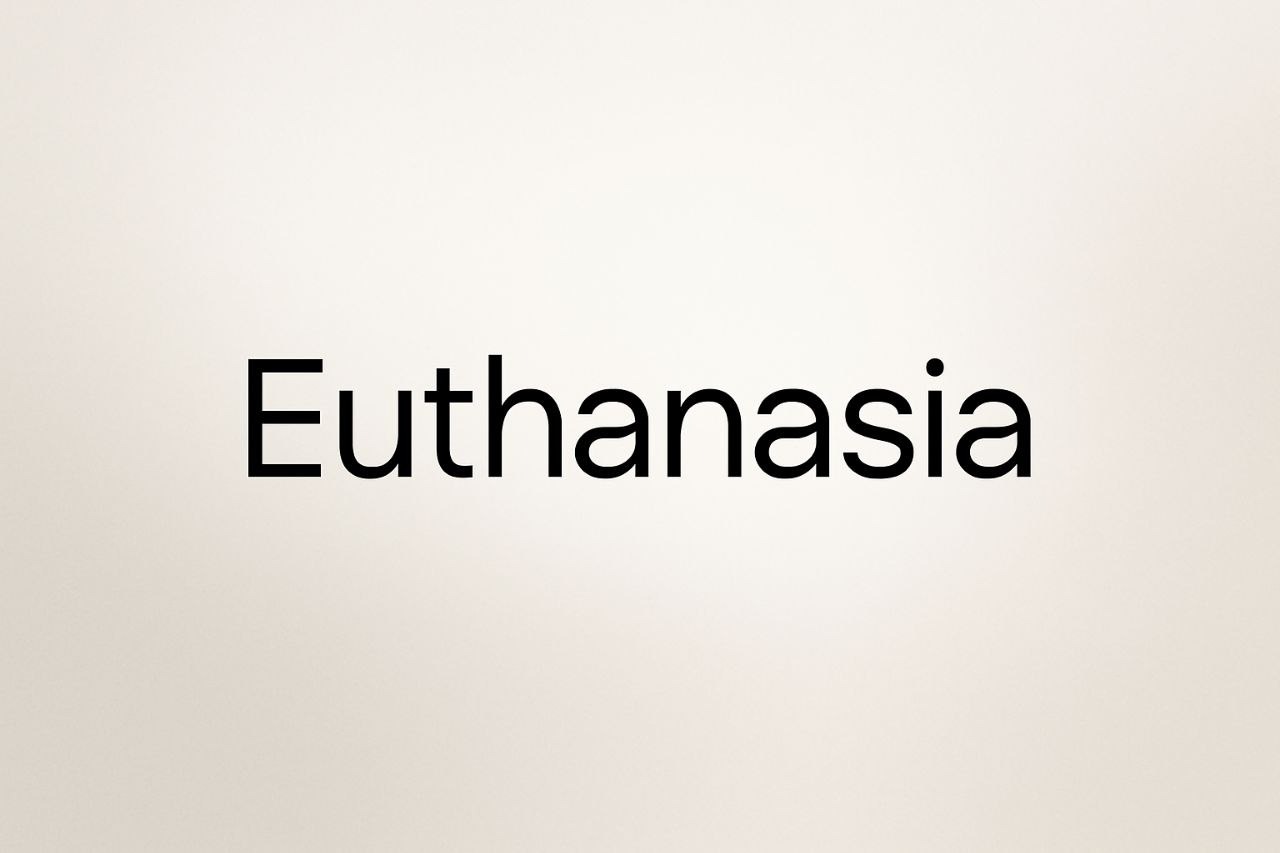Why Active or Passive Euthanasia Is the Wrong Choice

In today's world, the debate surrounding euthanasia, both active and passive, has become increasingly complex and contentious. With advancements in medical technology and the ability to prolong life in ways never before imagined, many people are forced to confront the ethical dilemma of choosing whether to end life prematurely when suffering becomes unbearable. However, from the perspective of ancient Indian wisdom, the choice of euthanasia, whether active or passive, contradicts the fundamental principles of life, death, and the soul’s journey.
The Sanctity of Life in Ancient Indian Wisdom
Indian scriptures teach that life is a sacred gift, a divine opportunity bestowed upon the soul by the Supreme Consciousness. The Bhagavad Gita, one of the most revered texts, highlights that the soul (Atman) is eternal and beyond the material body.
"For the soul, there is neither birth nor death at any time. It is not slain when the body is slain."
(Bhagavad Gita, Chapter 2, Verse 20)
This verse reminds us that while the physical body may endure suffering or disease, the soul’s journey is not defined by this. Life, therefore, should not be ended prematurely, as every moment holds purpose and contributes to the soul’s evolution through its karmic journey.
The Concept of Dharma: Fulfilling One’s Duty
Indian philosophy emphasizes the concept of dharma, one’s duty or righteous path. Each individual has a unique role to play in this world, and life’s challenges, including illness and suffering, are seen as part of that journey.
In Srimad Bhagavad Gita, Lord Krishna advises Arjuna to embrace his dharma as a warrior, even though it involves pain and the destruction of his loved ones. Arjuna’s initial resistance to fight in the battle is met with Krishna’s wisdom on the importance of fulfilling one’s duty:
"You have a right to perform your prescribed duties, but you are not entitled to the fruits of your actions. Never consider yourself to be the cause of the results of your activities, nor be attached to inaction."
(Bhagavad Gita, Chapter 2, Verse 47)
This guidance speaks directly to the essence of facing suffering in life. Instead of trying to escape pain through extreme measures like euthanasia, one must fulfill their duty, whether as a patient enduring illness or as a caregiver offering love and support.
The Law of Karma: Learning Through Suffering
Another cornerstone of Indian philosophy is the law of karma, which states that every action, thought, and decision has consequences. This includes the manner in which one deals with suffering. The law of karma teaches that pain and suffering are often the result of past actions, but they also provide opportunities for the soul to evolve, to atone, and to learn.
When one opts for euthanasia, whether active (administering a lethal dose) or passive (withholding life-saving treatment), it can be seen as an attempt to escape the karmic lessons intended for the soul. Such decisions may disrupt the natural course of one’s karmic journey, preventing the soul from learning important lessons and from experiencing the full spectrum of life.
"The soul never dies; it is eternal, imperishable, and beyond birth and death. It merely passes from one body to another."
(Bhagavad Gita, Chapter 2, Verse 19)
By choosing euthanasia, we may be interfering with the soul’s opportunity to experience the fullness of its existence, leading to an incomplete karmic cycle.
The Role of Compassion: Upholding Ahimsa
At the heart of Indian wisdom is ahimsa, non-violence or compassion. Euthanasia, whether active or passive, involves a deliberate act of ending a life. In doing so, one contradicts the very principle of ahimsa, as it causes harm to the soul’s natural journey. The ancient scriptures emphasize that true compassion lies not in ending suffering prematurely but in offering solace and support to the suffering soul.
In the Mahabharata, a story of great moral dilemmas, Lord Krishna's teachings on compassion emphasize that real kindness comes in allowing life to unfold, even through hardship. He implores that every living being must be treated with reverence and respect, regardless of the suffering they may endure.
Spiritual Healing and the Power of Prayer
Indian philosophy places a strong emphasis on prayer, meditation, and devotion as tools for spiritual healing. In times of suffering, rather than seeking to end life, individuals are encouraged to turn to the divine for strength, healing, and understanding. Bhakti (devotion) and sadhana (spiritual practice) are pathways to enduring suffering with grace.
The great saints and sages of India have often spoken of the importance of prayer in the healing process. Suffering, though painful, is seen as an opportunity to connect more deeply with the divine. The process of prayer, chanting mantras, and seeking the guidance of enlightened beings can help an individual overcome even the most intense physical and emotional pain.
Embracing Life, Not Fleeing from It
While pain and suffering caused by illness or old age may seem unbearable at times, choosing euthanasia, whether active or passive, is not the answer from the perspective of Indian scriptures. Life is not just about survival; it is a journey of the soul, a path toward spiritual evolution through the experiences of joy, pain, love, and loss.
Rather than seeking to end life prematurely, we should embrace our struggles with faith and seek spiritual solace in the teachings of the ancient scriptures. By doing so, we not only honor the sanctity of life but also align ourselves with the eternal laws of the universe that guide the soul’s ultimate liberation, moksha.
Let us remember that life is not a burden to be discarded, but a sacred experience meant to be lived fully, in accordance with the divine plan, until the soul’s natural journey reaches its end.
"Do not try to end suffering by ending life; rather, end suffering by understanding life."
~ Adarsh Singh
Fri Apr 25, 2025
